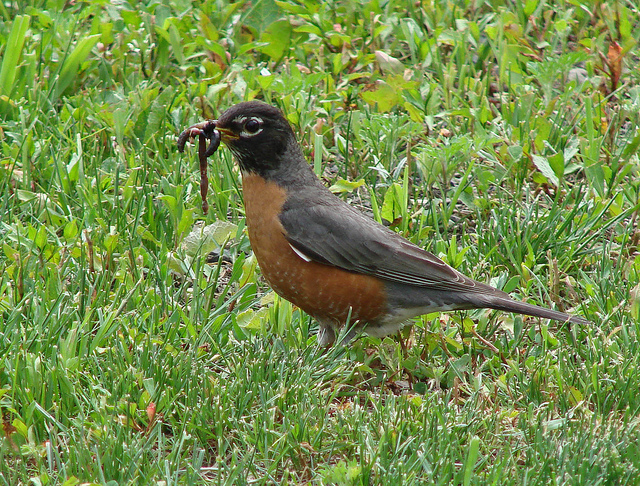4. Compost as much kitchen waste as possible.

As increasing numbers of people put greater pressure on municipal sewer systems, nutrient loads on water supplies become increasingly dangerous, ultimately contributing to dead zones in the ocean and to eutrophication of fresh water, both of which degrade water quality for many aquatic organisms and the birds that depend on them. When we dispose of food wastes in the garbage, they add to the nutrients seeping into groundwater or running off into lakes, rivers, ponds, and streams from the landfill. Garbage disposals contribute not only to nutrient loads but also to wastewater; in addition, grease, oil, peanut butter, and other items may harden in the drain or sewage system.
It’s better to put greasy food garbage in a container (cardboard juice boxes and milk cartons work well) to dispose of it in the garbage. Also, wrap and dispose of bones, cheese, eggs, and other animal products in the garbage. To minimize food waste, as well as to minimize your contribution to the problems associated with food production, don’t prepare more food than will actually be eaten.
Composting discarded vegetable items and eggshells provides a wonderful resource for improving your backyard soil while minimizing your contribution to environmental problems. The simplest compost pile can be a pile of leaves, grass clippings, and kitchen waste (use only plant waste and eggshells—not meat, eggs, cheese, and the like) in an unobtrusive corner of the yard. If you want to accelerate the composting process, mix “greens” (grass clippings, vegetable peelings, coffee, and eggshells) and “browns” (dried leaves or cow or horse manure). Because dogs and cats eat meat, their waste shouldn’t be composted; dispose of it in the garbage, flush it, or bury it.
Select a shady spot for your compost pile, where runoff is unlikely. Compost piles set too close to storm sewers or on hills can cause nutrients to run off.
From 101 Ways to Help Birds, published by Stackpole in 2006. Please consider buying the book to show that there is a market for bird conservation books. (Photos, links, and updated information at the end of some entries are not from the book.)